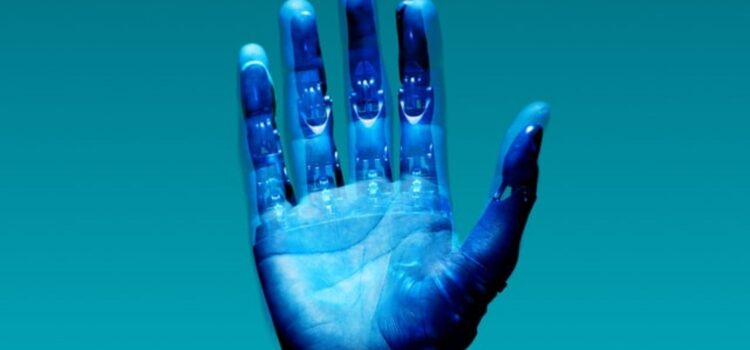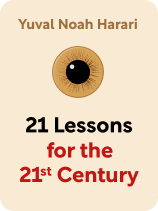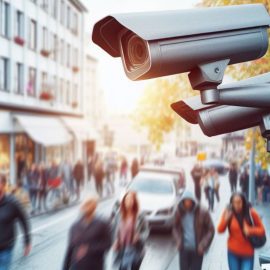

This article is an excerpt from the Shortform book guide to "21 Lessons for the 21st Century" by Yuval Noah Harari. Shortform has the world's best summaries and analyses of books you should be reading.
Like this article? Sign up for a free trial here .
Will AI cause mass unemployment? Are smart assisstants and self-driving cars going to make people lose their jobs?
AI-based systems are taking every industry by storm. The concern of AI causing unemployment on a massive scale is becoming increasingly urgent as AI capabilities progress.
Keep reading to learn about AI-induced unemployment, and some possible routes the government could take to adapt to the AI-automated economy.
The Impact of AI on Unemployment
Technological innovation is enabling AI to perform an increasing number of jobs, which will cause unemployment on a massive scale.
Throughout history, each new machine and labor-saving technology created at least as many jobs as it eliminated—for example, a piece of equipment that replaced a human laborer also required someone to operate the equipment and another person to do maintenance on it. Past innovations substituted human workers’ physical capabilities, but not their cognitive abilities. No matter how quickly a machine could sew a shirt compared to a seamstress, the machine couldn’t take customers’ measurements.
However, the dual rise of infotech and biotech is creating technologies that could truly replace the need for human workers. New discoveries in neuroscience have revealed that human skills such as analyzing, decision-making, communicating, and interpreting other people’s emotions are the results of specific brain algorithms—not the elusive forces of free will. For example, when a lawyer enters negotiations, she’s not being guided by her intuition, but rather by algorithms that pick up on the other party’s biochemical patterns, including their gestures, tones of voice, and facial expressions.
Now that scientists understand how the human brain uses these algorithms, technologists can replicate those processes with AI. As a result, not only can machines do a human’s job, but they can do it better than humans, because they’re immune to human error and biases. Additionally, machines can be connected on a network and updated all at once. Imagine the implications in the medical field: When new research comes out, it’s nearly impossible to alert every doctor in the world—but a global network of AI doctors could receive that update in an instant. Similarly, a network of self-driving taxis could all be updated whenever traffic laws are updated.
The indirect effects of automating high-skilled jobs would be substantial and far-reaching. For example, if computers can do the job of doctors, the massive savings in payroll could make healthcare more affordable for everyone. Furthermore, patients in rural Uganda could receive the same quality of care as patients on the Upper East Side of Manhattan, because their robot doctors would have access to the same information and resources.
However, even with the improved capabilities of AI, unemployment won’t become the destiny for all of us because not all professions lend themselves to automation. For example, AI doctors are more likely than AI nurses because doctors’ job duties involve collecting data on patients’ symptoms and analyzing the information in order to give diagnoses—and data collection and analysis are two of computers’ strongest abilities. On the other hand, nurses need a broader range of physical and emotional skills to work with patients.
Automating Creativity
While it’s tempting to assume that creative professionals like artists and musicians would be similar to nurses in being immune to automation, even the arts aren’t safe from AI. Just as decision-making and interpersonal interactions trace back to neurological processes, so do emotions, which are at the core of creating and consuming art. When you listen to music, your emotional response is reflected in physical reactions, such as a change in heart rate and hormone levels. Machines measuring your biometric data could learn your preferences and create art designed to elicit a specific emotional response.
For example, if you go through a breakup, an AI sound system that has learned which genres, bands, and songs you like could detect your emotions and play the perfect sad and angry songs to fit your mood. If you prefer that your sound system plays music that lifts your mood, you could make one of two adjustments:
- Program your sound system to play happier music.
- Program the system to choose songs based on your preferred psychological philosophy—for example, you could program it to follow the teachings of psychologist Elisabeth Kübler-Ross and her five stages of grief, playing songs that reflect and elicit denial, anger, bargaining, depression, and acceptance.
Additionally, your AI sound system could:
- Introduce you to new music, if you simply program it to play random songs 5 percent of the time
- Keep track of your favorite and least favorite songs based on your biometric readings
- Detect when a song you love has a verse or a note that annoys you, and slightly edit the song to eliminate the annoyance
- Compose music specifically tailored to your preferences and emotional response
- Use data from a global biometric database to compose a song that resonates with everyone and becomes a worldwide hit
AI & Unemployment: Creating a “Useless Class”
Although AI has the potential to eliminate many jobs, it can also create or shift work in three ways:
- Integrating the technology will create jobs related to its use. For example, if human pilots are replaced by drones, the change will create a need for people to maintain the drones, pilot them, and ensure that they aren’t hacked.
- The money saved in payroll can go toward funding research and innovation. For example, in the medical field, if AI doctors begin diagnosing patients, human doctors and lab assistants can research diseases and develop new treatments.
- In some fields, human workers can team up with computers to perform better than either could do individually.
Despite these possibilities, it’s likely that there will still be a net loss in employment, creating a “useless class” of unskilled workers. Some workers will be able to get training in a new set of skills, but technology will continue to change so rapidly that those new skills could also become obsolete a decade later. Even in fields that introduce human-computer teams, the computers may eventually perform so well that they no longer need their human partners. This volatility in the job market presents its own challenges, such as:
- Making it difficult to unionize and establish labor rights
- Causing stress for workers who face a never-ending cycle of training for jobs that soon become automated
Faced with the possibility of AI-induced unemployment, there are a few possible routes that the government can take:
- Step in and slow the adoption of technology and automation. Just because a technology exists doesn’t mean that it has to be used—even if it could increase efficiency and profits.
- Create new jobs. However, this approach requires the government to subsidize workers’ extended education and training, and to create a safety net for workers’ transitional periods between jobs.
- Develop systems to cope with inevitable unemployment in the AI-automated world.
Accommodating for a Post-Work Society
If the world faces the possibility of a post-work economy, governments need to determine ways to support people. One possibility is a universal basic income (UBI), which taxes corporations and billionaires and distributes money to the rest of the population. However, this strategy has a few major complications:
- UBI is generally collected and distributed on a national basis, but in a modern global market, the people who most need to be subsidized may be on the other side of the world. Many developing countries without profitable natural resources outsource cheap labor, such as factory workers and call center operators. When AI automates these jobs, those wages will go to the Silicon Valley tech companies and the workers abroad will be left with nothing. But it’s hard to imagine Americans voting to approve taxes that subsidize not only American victims of automation, but also foreign ones.
- There’s no objective measure for which needs are considered basic. It would be difficult to determine if basic income should cover just enough for people to buy food and survive, or whether it also includes education (and to what level) and healthcare (and how extensive).
Another possibility is to broaden the definition of work. Parents who take care of their children, people who take care of elderly relatives, and community members who organize their neighbors are all contributing to society but don’t get paid for these services. If the government recognized these tasks as jobs and paid the people who performed them, it would reduce unemployment—but the government would need to levy taxes in order to fund those wages. In practice, this ends up being similar to UBI.
A third possibility is to provide free basic services instead of basic income. This would require the government to cover the cost of education, transportation, healthcare, and other services. This is the ideal in communism. However, this strategy would still require governments to determine what “basic” encompasses.
Twentieth-century workers were vital to the economy but lacked political power, so they fought against exploitation. In this technological revolution, workers may have political power but they are not necessary to the labor market, so they face a fight against irrelevance. There are so many variables—from how technology will develop to how the government and society will adopt new innovations—that there’s no way to know how the labor market will change or how long it will take. However, the stakes are high enough that people can’t afford to bury their heads in the sand about the possibility.

———End of Preview———
Like what you just read? Read the rest of the world's best book summary and analysis of Yuval Noah Harari's "21 Lessons for the 21st Century" at Shortform .
Here's what you'll find in our full 21 Lessons for the 21st Century summary :
- What the unique challenges of the 21st century are and will be
- Why religion can't solve these 21st-century challenges
- How algorithms like Netflix recommendations are teaching you not to trust yourself






